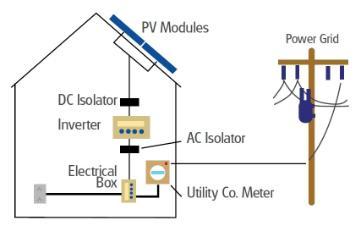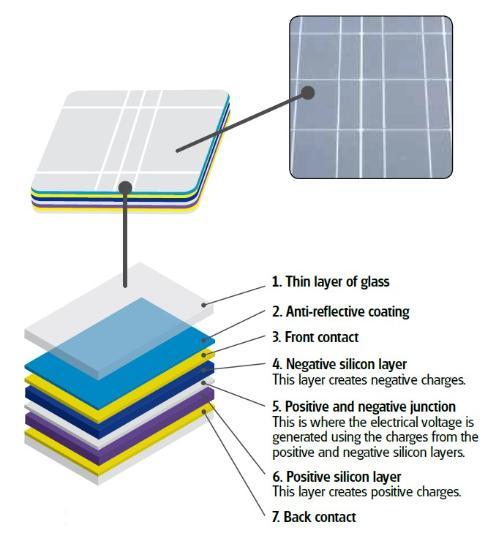Solar panels in your home
Why your home has had Solar Panels fitted
Your home is connected to the solar panels on the roof of your property. Over 900 Derby Homes properties have had solar panels fitted to their roofs. They have mainly been fitted to bungalows and ground floor flats.
Not all of our properties were suitable to have solar panels fitted. The panels were generally fitted on south facing roofs as they would receive the right amount of sunlight to work properly. We also had to look at the pitch of the roof and the roof construction to make sure it
could hold the weight of the panels.
How your Solar panels work
The panels work by taking energy from sunlight and turning it into electricity. They only work and produce electricity during daylight hours. The electricity they produce is yours to use free of charge. If you don’t use it all, it will flow back through your electricity meter back on to the
national grid.
The electricity produced is a direct current. In your loft or in your outside meter store there is an inverter that converts the electricity into an alternating current, so that the electricity can be used in your home. There are also isolation switches near your consumer unit (electrical fuse box) and in your loft. This is so the panels can be switched off if any work needs to be done to any of the equipment or in your loft. There is also a generation meter in your loft that records all of the electricity that is generated and sends details of this electronically to a monitoring company.
This diagram shows you how the system is connected in your home:

DC - Direct Current
AC - Alternating Current
The amount of electricity generated by the panels will vary over the year. The hours of daylight are shorter in the winter than the summer months, so less electricity per day will be generated. The intensity of the daylight will also affect how much electricity is generated. It is not hot days, but brighter days that will produce the most electricity. Even on a cloudy day, some electricity will be generated. Only on dark, rainy days are the panels unlikely to produce very little or no electricity.
What you need to do
Having Solar panels installed on your roof does not mean that all your electricity is free. You will still receive a bill from your electricity supplier for any electricity you still use that is supplied by them.
When your panels are producing electricity, the electricity produced by the panels will always be used first. Any extra electricity needed will be charged as normal from your electricity supplier via your electricity meter.
If you want to save as much money as possible and take advantage of the free electricity produced by the panels, you need to decide to use appliances when you know the panels are likely to be producing electricity. Try to use one major appliance at a time, so that you are taking full advantage of the free electricity.
However, you do not need to change your current lifestyle if you don’t want to. Any electricity generated by the panels will automatically supply any appliances you have on all the time including timers, your fridge/freezer and items left on standby. So even if you don’t do anything, you will still benefit from this free electricity. Any electricity that is not used will go back on to the national grid automatically through your electricity meter.
Solar panels require very little maintenance, but from time to time, contractors or Derby Homes Repairs Team may need to check or service them. Please make sure that you do not block access to the inverter and generation meter and do not tamper with any of the equipment that has been installed. Only a qualified Solar PV trained electrician should work on the equipment installed.
Please do not switch off your solar PV panels at either of the isolation switches by your consumer unit (fuse box) or in the loft unless you are instructed to do so, or if there is an emergency. The solar PV panels will switch off automatically if there is a power cut or the main electricity supply to the property is switched off. The isolation switches do not need to be re-switched on or off manually.
Photovoltaic systems
Photovoltaic (PV) systems work by taking energy from sunlight and converting it to electricity.
The PV cells are made from two thin slices of chemically treated silicon, placed under a thin layer of glass (see diagram). When sunlight shines onto the PV cell, the reaction of the chemicals creates electrons that are used to form an electric current. This process is called the ‘photovoltaic effect’. The cells require virtually no maintenance and can last for up to 40 years.
An individual solar cell only generates around 0.5V of electricity, so a collection of cells are fixed together to form a solar panel which will generate between 80 and 230kWp of power. A number of panels are fitted to a property on a southerly facing roof at an angle of between 30º and 50º, where they will receive maximum sunlight.
PV systems can also be installed on south-easterly and south-westerly facing properties, although they will be about 5% less efficient than those fitted on a southerly facing roof. We do not fit panels on northerly facing properties as they would not receive the right amount of sunlight to generate enough electricity for the property.
The electricity generated is called a ‘direct current’. This has to be converted to an ‘alternating current’ before it can be used to power electrical items or be transferred onto the national energy grid. This conversion is done using an inverter.
A well installed PV system will produce between 750kWh and 850kWh of ‘alternating current’ electricity every year, Depending on the size of the installation.
The panels and the inverter account for most of the cost of installing a PV system but there are other things needed to make sure the system works safely, reliably and to current electrical regulations.
A grid connected PV system
Grid-connected PV systems make use of the existing mains electricity grid. They are simpler in design and easier to install than ‘off grid’ systems. The electricity produced during the daytime can either be used by the property occupier or directed back into the national grid. At night, or on dark days when the panels don’t produce enough power, electricity is supplied to the property using the normal utility company grid system.
